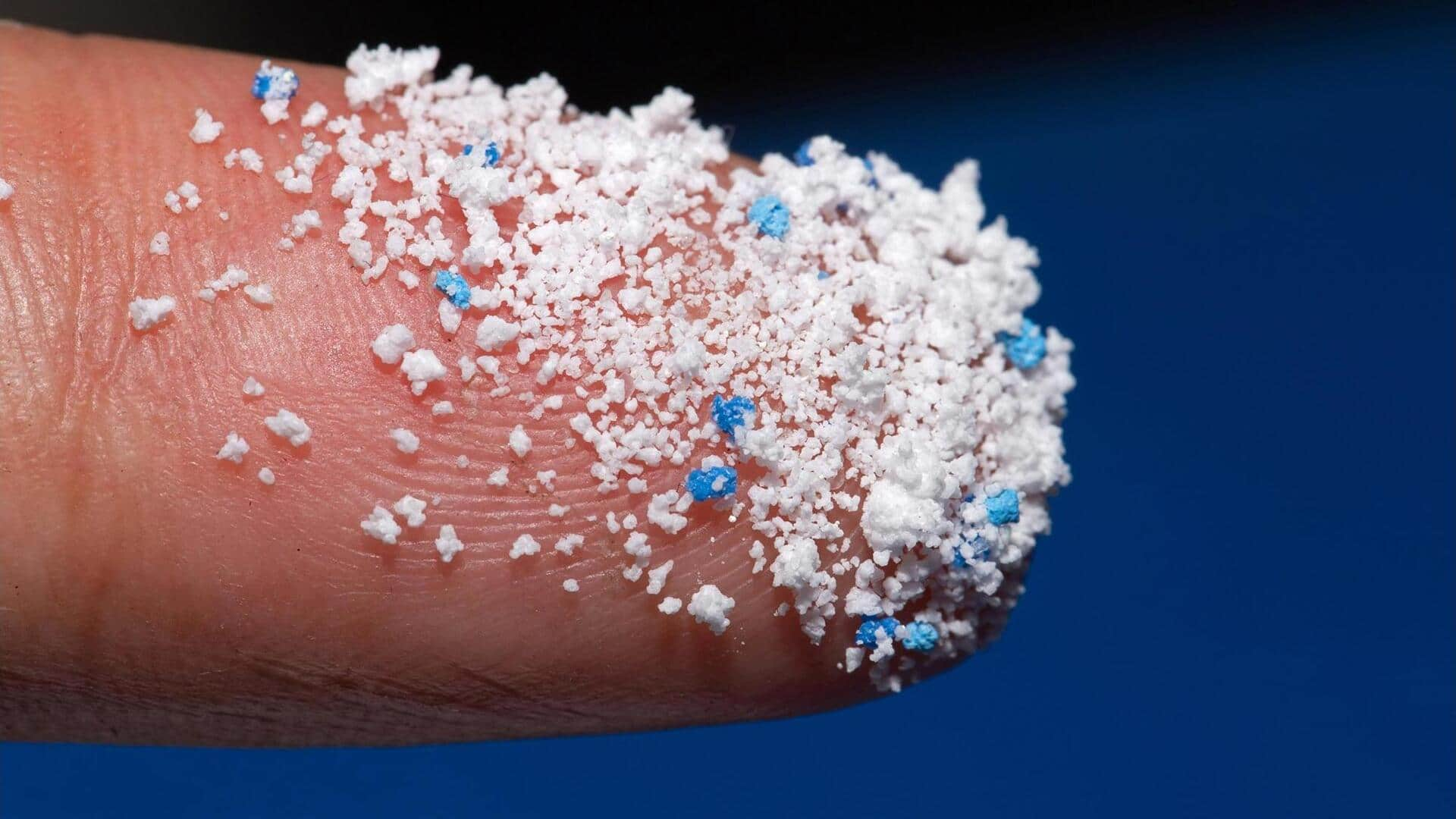By Dwaipayan Roy | Oct 12, 2025 | 06:22 pm
—
**What’s the Story?**
Microplastics, tiny plastic particles less than 5mm in length, have been detected in various parts of the human body, including blood, placentas, and lungs. A recent study even suggested that our cerebral organs alone could hold up to 5 grams of these particles. The presence of microplastics in such vital organs raises serious concerns about their potential impact on human health and well-being.
—
**Gut Impact: Potential Links to Serious Health Conditions**
Recent research indicates that microplastics may be affecting our gut microbes. Dr. Christian Pacher-Deutsch from the University of Graz in Austria found that exposing gut bacteria from five healthy volunteers to five common microplastics changed both their populations and the chemicals they produced.
Some of these changes mirrored those associated with depression and colorectal cancer, highlighting a potential connection between microplastics and serious health conditions.
—
**Accumulation Concerns: Widespread Presence in the Human Body**
Microplastics originate from a variety of sources such as packaging, clothing, paints, cosmetics, and car tires. Some particles are small enough to cross the barriers of our lungs and intestines, entering our bloodstream and internal organs.
Dr. Jaime Ross from the University of Rhode Island notes that while designing definitive experiments is challenging due to constant exposure to these particles, research consistently shows microplastics are found in nearly every tissue examined. Alarmingly, we are accumulating more plastic in our bodies now than we did two decades ago.
—
**Behavioral Impact: Altered Behavior in Mammals**
Dr. Ross’s research also explored the impact of microplastics on the mammalian brain. In a 2023 study, mice exposed to water laced with microplastic particles exhibited altered behavior, such as venturing more into open spaces rather than sticking to walls defensively.
This behavioral change is often linked with aging and neurological diseases, suggesting that microplastics may have similar effects on human behavior and brain health.
—
**Health Risks: Microplastics in Brains of Dementia Patients**
Microplastics have also been detected in the brains of dementia patients and arterial plaques of individuals with heart disease. Those with plaques containing microplastics were nearly five times more likely to suffer a stroke, heart attack, or die within three years.
These findings highlight potential health risks directly associated with microplastic contamination in our bodies.
—
**Personal Experience: Testing for Microplastic Exposure**
To understand microplastic exposure better, a blood test was conducted to measure their presence. The test detected four microscopic particles, roughly 40 particles per milliliter of blood. Based on their size, one likely entered through the gut while the other three were probably inhaled.
Though this result is lower than the average person—who has over a million microplastic particles in their bloodstream—it still raises pressing concerns about our ongoing exposure to these tiny pollutants.
—
**Safety Concerns: The Need for Further Research**
Despite growing evidence linking microplastics to various health issues, there is still no consensus on what constitutes a “safe” level of these particles in the human body. The research field remains in its infancy, and consumer tests for microplastic exposure are considered “very premature.”
This uncertainty emphasizes the urgent need for further studies to understand fully the potential risks associated with microplastic exposure.
—
*Stay informed and take steps to reduce your plastic exposure where possible.*
https://www.newsbytesapp.com/news/science/microplastics-found-in-human-organs-how-they-affect-our-health/story


